Discover 20 hidden attractions, cool sights, and unusual things to do in Nicosia (Cyprus). Don't miss out on these must-see attractions: St. Sophia Cathedral, Büyük Han, and Famagusta Gate. Also, be sure to include Cyprus Folk Art Museum in your itinerary.
Below, you can find the list of the most amazing places you should visit in Nicosia (Nicosia).
Table of Contents
St. Sophia Cathedral

Also known as: Τέμενος Σελιμιγιέ Λευκωσίας
Mosque housed in a onetime Gothic church. Selimiye Mosque, historically known as Cathedral of Saint Sophia or Ayasofya Mosque, is a former Christian cathedral converted into a mosque, located in North Nicosia. It has historically been the main mosque of the city. The Selimiye Mosque is housed in the largest and oldest surviving Gothic church in Cyprus possibly constructed on the site of an earlier Byzantine church.
In total, the mosque has a capacity to hold 2500 worshipers with 1750 m2 available for worship. It is the largest surviving historical building in Nicosia, and according to sources, it "may have been the largest church built in the Eastern Mediterranean in the millennium between the rise of Islam and the late Ottoman period". It was the coronation church of the kings of Cyprus.[1]
Address: Kirlizade Sk, Nicosia
Büyük Han
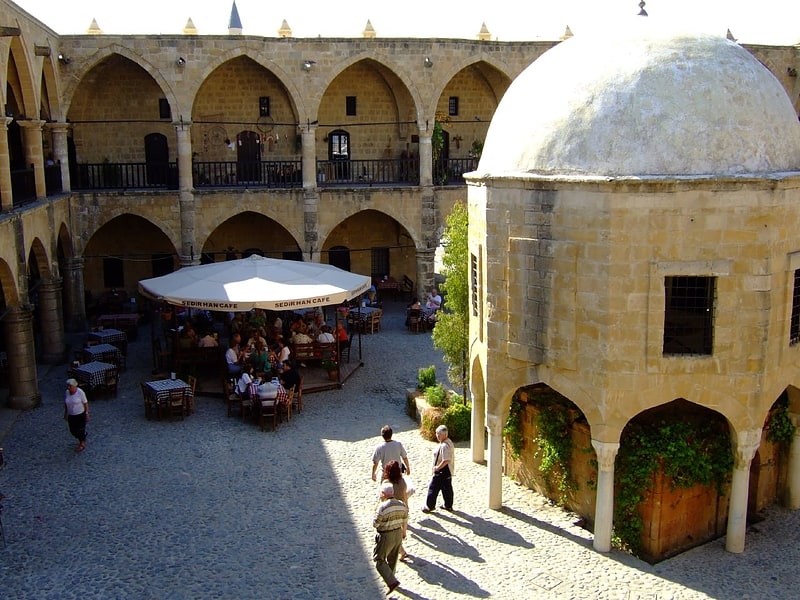
Also known as: Μπουγιούκ Χαν
Shopping area in a historic building. Büyük Han is the largest caravansarai on the island of Cyprus and is considered to be one of the finest buildings on the island. Located in the capital of Cyprus, it was built by the Ottomans in 1572, the year after they had seized Cyprus from the Venetians. In the centre of the open courtyard is a mosque with a fountain for pre-prayer ablutions. It became the first city prison under British administration. After spending most of the 1990s being restored, the inn has been revived as a thriving arts centre, consisting of several galleries and workshops. There are also several courtyard cafes and souvenir shops.[2]
Address: Arasta Sok., Nicosia
Famagusta Gate

Cultural center in Nicosia, Cyprus. The Famagusta Gate is a gate in the Nicosia walls, Cyprus. It is the chief gate of the city: the Porta Giuliana, or "di sotto" of Fra Stefano Lusignano's " Chorograffia", known as Famagusta Gate in modern times. This construction, in the Venetian style has been copied from the famous Lazaretto Gate of Candia designed by Michael Sammicheli at the beginning of the 16th century, and consists of a vaulted passage through the earthwork rampart of the city with a carefully executed spherical dome, eleven metres in diameter, in its centre. The passageway is large enough for two vehicles to pass, and it is lighted by a circular opening in the centre of the dome in the style of the Pantheon, Rome. On either side of this passage appear to be entrances into chambers now blocked up. The external doorway of the Porta Giuliana is a small archway in the re-entering angle or "orecchione" of the Caraffa bastion now somewhat injured by breakage of the arch stones, and the ancient doors, etc. are missing. On the inner side of the gateway, facing the town, is an imposing facade.[3]
Address: Leoforos Athinas, Nicosia
Cyprus Folk Art Museum
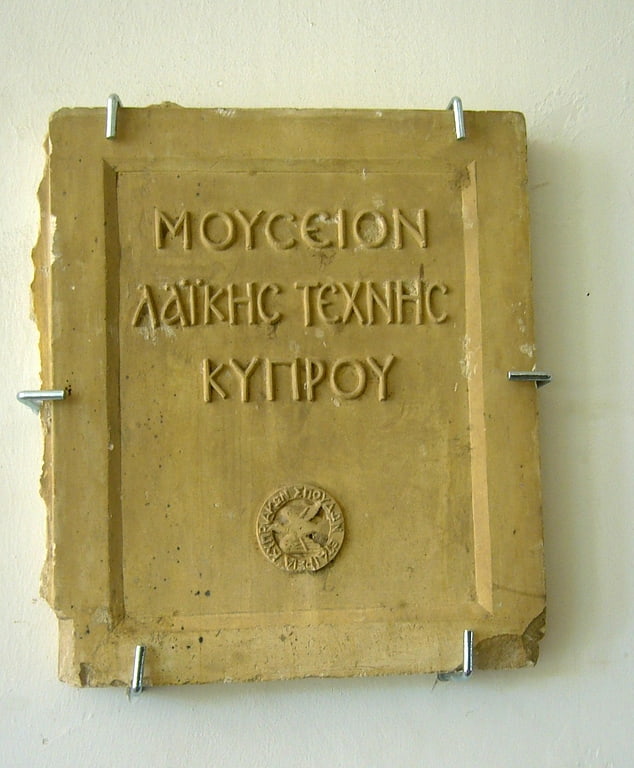
The Cyprus Folk Art Museum is a museum in Cyprus dedicated to the country's ethnographic history. The museum is located in Nicosia directly beside the Cathedral of Agios Ioannis Evangelistis, the Byzantine Museum of Cyprus, the National Struggle Museum, and the current Archbhishop's Palace. The square beside the cathedral and museum is named after Kyprianos of Cyprus who was executed by the Ottomans in 1821 for his support of the Greek Revolution. Facing the museum and cathedral is the Pancyprian Gymnasium, founded in 1812 by Kyprianos and is the oldest educational institution in Cyprus. During the 1990s the name of the museum was changed to the Ethnographic Museum for a short period. The museum is a non-profit cultural organisation and has depended on volunteers since it was founded in 1937.[4]
Address: Πλ. Αρχιεπισκόπου Κυπριανού, 1016 Nicosia
Archbishop's Palace
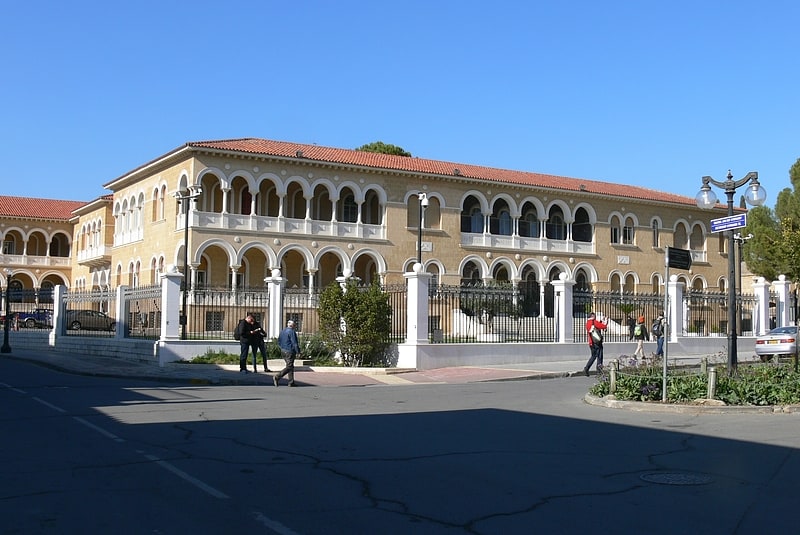
Also known as: Αρχιεπισκοπικό Μέγαρο
Archbishop's Palace is the official residence and office of the archbishop of Cyprus located in Nicosia. The palace was built next to the "Old Archbishop's Palace", between 1956 and 1960; in neo-Byzantine architectural style. Its general plans were designed by George Nomikos in Athens, while Nicholas S. Roussos and John Pericleous from Limassol were responsible for all other architectural work. The bronze sculpture of Makarios III, the first president of Cyprus, was on its grounds but has now been moved the monastery of Kykkos. It was sculpted by Nikolas Kotziamannis, weighs around 13 tons and is approximately 30 feet tall. Although the Archbishop's Palace is not open to the public; the Byzantine Museum, Library of the Archbishopric, Folk Art Museum and the National Struggle Museum located on its grounds are open to the public.[5]
Faneromeni Square
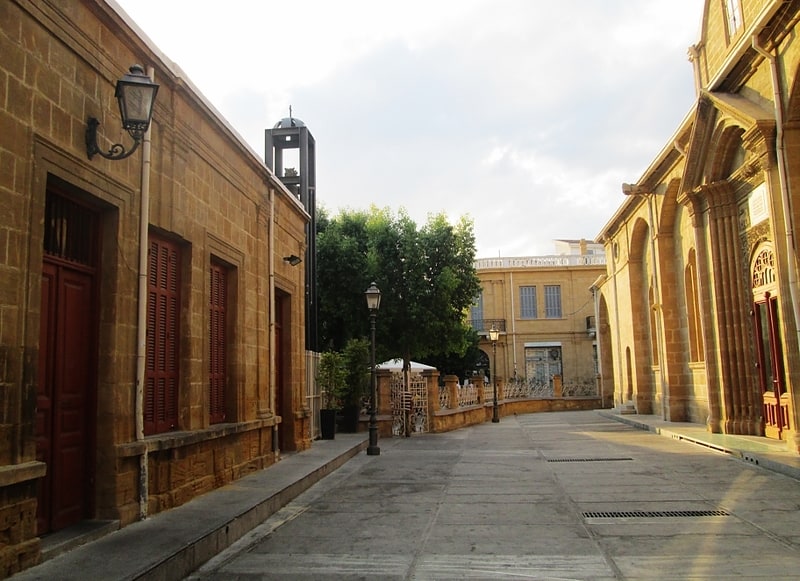
Faneromeni Square is an important historical square in Nicosia. It is in an ancient part of Nicosia, within city walls built when it was under Venetian rule.
It hosts a number of historical buildings and monuments including Faneromeni Church, Faneromeni School, Faneromeni Library, and the Marble Mausoleum.[6]
Mevlevi Tekke Museum
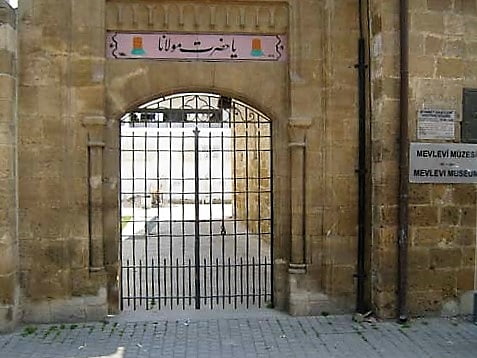
Mevlevi Tekke Museum is a tekke in Nicosia, Cyprus, currently in North Nicosia. It has historically been used by the Mevlevi Order and now serves as a museum. It is one of the most important historical and religious buildings in the island. It is located next to the Kyrenia Gate, on Girne Avenue, in the İbrahimpaşa quarter.[7]
Arab Ahmet Mosque
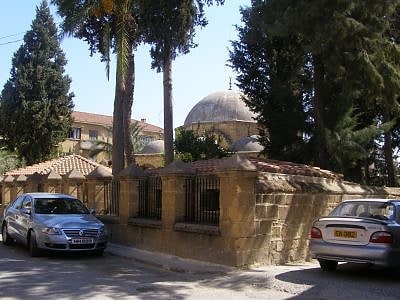
16th-century mosque with historic graves. Arab Ahmet Mosque is situated in the western Arab Ahmet Quarter of North Nicosia, Cyprus. It was built in the late 16th century. The Mosque is named after a commander of the 1571 Ottoman army. The mosque is the tombs of some important persons of the past in its garden.
It is an example of the classical Ottoman architecture. Due to the extensive renovation required, it was renovated in 1845. It is rectangular and the only mosque in Cyprus to exhibit a typical Turkish dome. A large central dome covers the main body of the mosque and three smaller ones cover its entrance. Four more cover its corners.
This mosque consists of a large hemispherical dome (about 6 metres diameter) carried on the usual Byzantine cruciform plan with pendentives. In front of the mosque is a porch covered with three smaller domes. No moulded or carved details relieve the severe simplicity of this characteristic Turkish monument. The current structure dates from 1845.
On the site of the Arab Ahmet Mosque stood a church of which a few mutilated fragments still survive scattered about the mosque enclosure, and in neighbouring houses. A lintel from a door on which a shield is carved with the bearing of two lions affronted, may be seen stuck in the ground. But the most singular survival from the ancient church consists of a small collection of 14th century gravestones.
A number of fragmentary inscribed stones amongst which the most interesting contain the names of Gaspar Mavroceni of the well-known Venetian family of that name, 1402, and Hugh de Mimars, 1324. Many of these fragments are in the usual type of medieval Greek script. There are also two tomb-slabs of the same design, in the low relief renaissance style of Italy of the 16th century which seem never to have been completed with inscriptions or the coats of arms for which shields have been provided. These two slabs are the only ones in the collection in the relief style.[8]
Address: Şht. Salahi Şevket Sk, Nicosia
Hadjigeorgakis Kornesios Mansion

Museum in Nicosia, Cyprus. The Hadjigeorgakis Kornesios Mansion is situated near the Archbishopric, in the neighbourhood of Saint Antonios in Nicosia, Cyprus, where the wealthy notables of the Greek community traditionally used to live.[9]
Address: Patriarchou Grigoriou 20, Nicosia
Bedesten
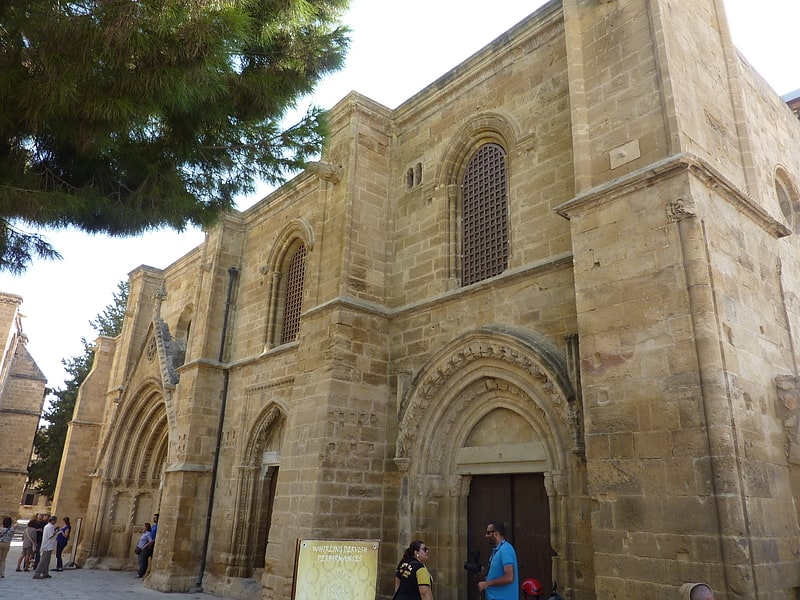
Church in Nicosia. Bedesten or Bedestan is a historical building in the Selimiye quarter of North Nicosia, located directly beside the Selimiye Mosque. The structure has a long and complicated history spanning more than one thousand years. Originally built as a church in about the sixth century, and expanded and rebuilt between the twelfth and sixteenth centuries, dedicated to Saint Nicholas, it was converted to a bedesten, a type of covered market, during the period of Ottoman rule. It is currently used as a cultural centre.[10]
Address: Kuyumcular Sk, Nicosia
Nicosia municipal gardens
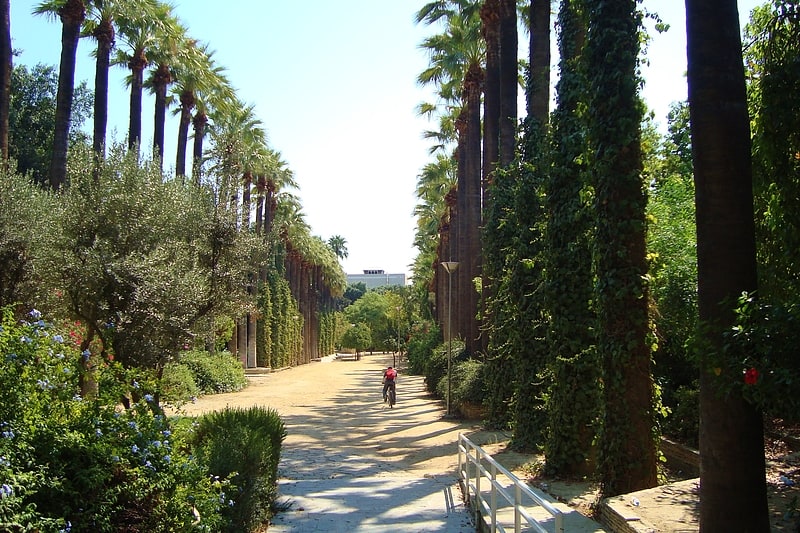
Also known as: Δημοτικοί κήποι της Λευκωσίας
Nicosia municipal gardens are the largest municipal gardens located in Nicosia, Cyprus. They are in the centre of the city.[11]
Leventis Municipal Museum of Nicosia
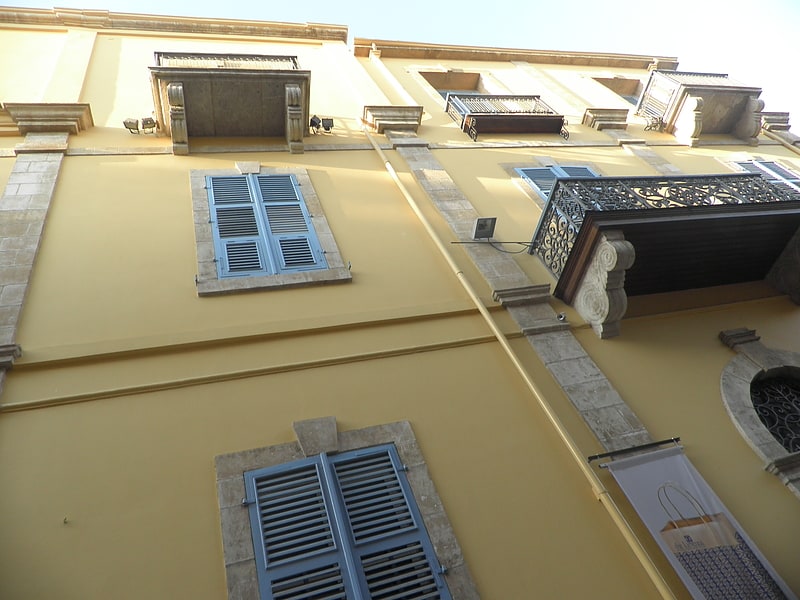
Museum in Nicosia, Cyprus. The Leventis Municipal Museum of Nicosia in Nicosia, Cyprus, is home to an extensive collection of Cypriot works include archaeological artifacts, costumes, photographs, medieval pottery, maps and engravings, jewels, and furniture.[12]
Address: Ιπποκράτους 15-17, 1500 Lefkoşa
Cyprus Museum
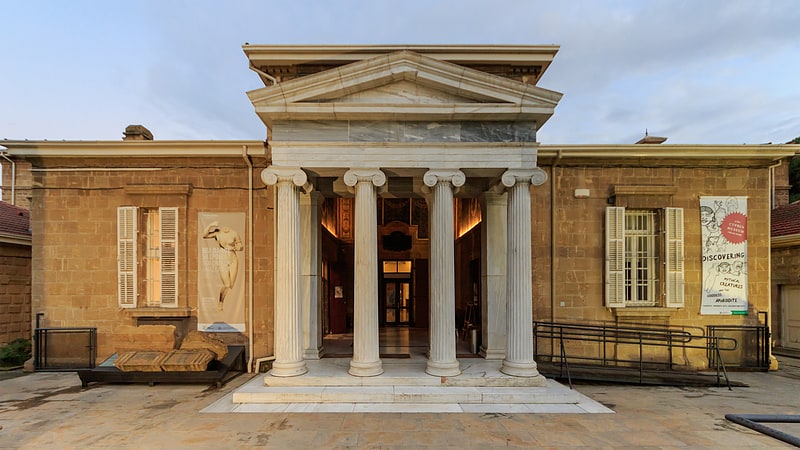
Also known as: Κυπριακό Μουσείο
Exhibits of local archeological finds. The Cyprus Museum is the oldest and largest archaeological museum in Cyprus.
The museum houses artifacts discovered during numerous excavations on the island. The museum is home to the most extensive collection of Cypriot antiquities in the world and is located on Museum Street in central Nicosia. Its history goes hand in hand with the course of modern archaeology (and the Department of Antiquities) in Cyprus. Of note is that only artefacts discovered on the island are displayed.[13]
Address: Omirou 32-38, 1097 Λευκωσία
Hamam Omerye
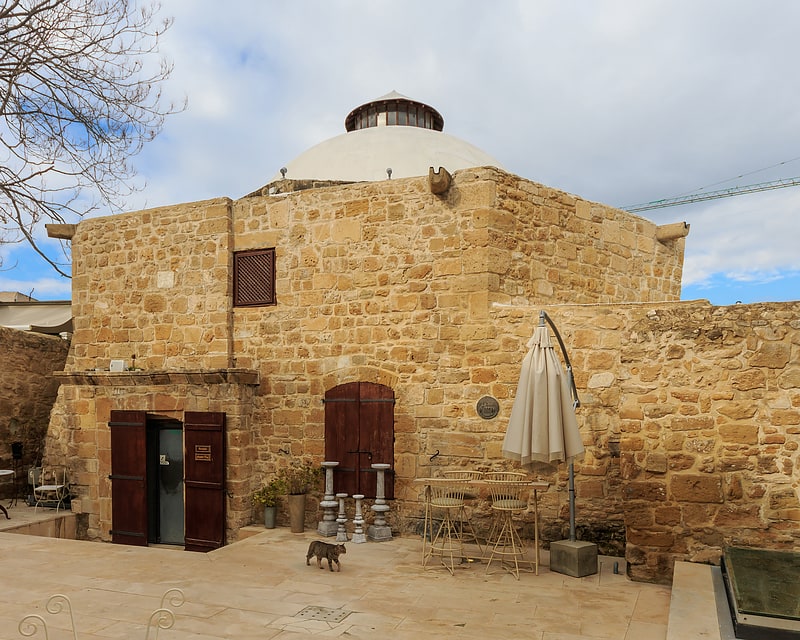
Ömeriye Hamam in Nicosia, Cyprus is a historic Ottoman hammam. It was created by Lala Mustafa Pasha in the 1570s, soon after the Ottoman conquest of Cyprus, and was part of the larger complex of the Ömeriye Mosque dedicated to the memory of the Caliph Omar. The complex reused the earlier 14th-century Augustinian church of St. Mary which was damaged in the Ottoman siege. The hammam was restored in 2002-2004 as part of the Lefkosia Master Plan and is still in use today as a bathhouse and spa.[14]
Address: Tillirias Square 8, 1016 Nicosia
Church of the Holy Cross
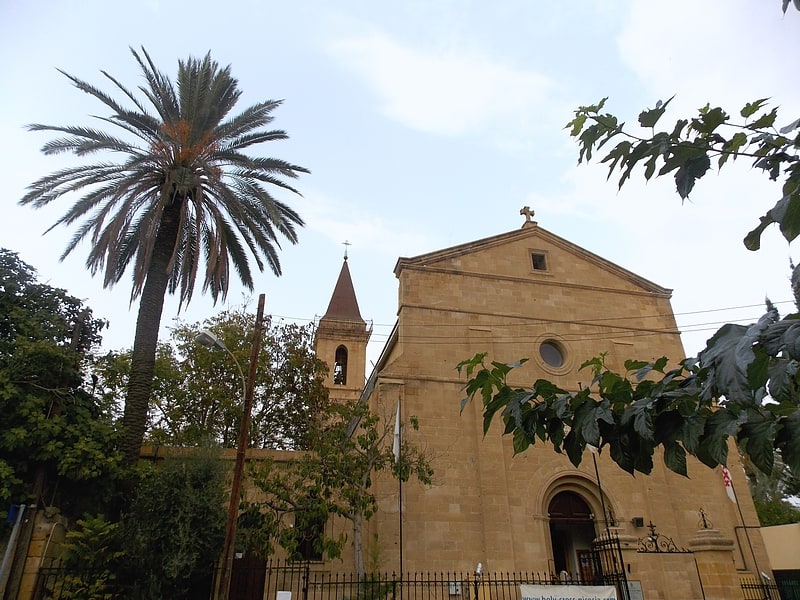
The Church of the Holy Cross is a Roman Catholic parish located in the city of Nicosia in Cyprus.
The first church dedicated to the Holy Cross was built in 1642 and operated continuously until the late nineteenth century. In April 1900 a new church dedicated to the Holy Cross was financially supported in part by the Spanish Royal Family and partly by the Franciscan friars of the Custody of the Holy Land. Its formal inauguration took place in 1902. It also has a friary which was rebuilt in 1959. Part of the access to the garden was blocked as a consequence of the Cyprus crisis of 1963–64 and the war of 1974, as the church sits in the buffer zone between Nicosia and North Nicosia.
The parish depends from the Latin Patriarchate of Jerusalem.[15]
Nicosia aqueduct
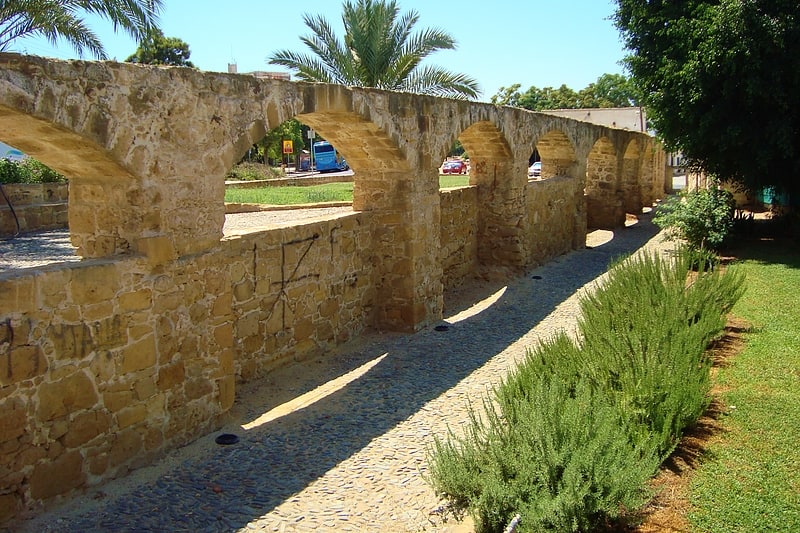
Historical landmark in Nicosia, Cyprus. Nicosia old aqueduct is located in Nicosia, the capital of Cyprus and is the oldest aqueduct in Cyprus. It is located close to Eleftheria Monument in Nicosia.[16]
Büyük Hamam
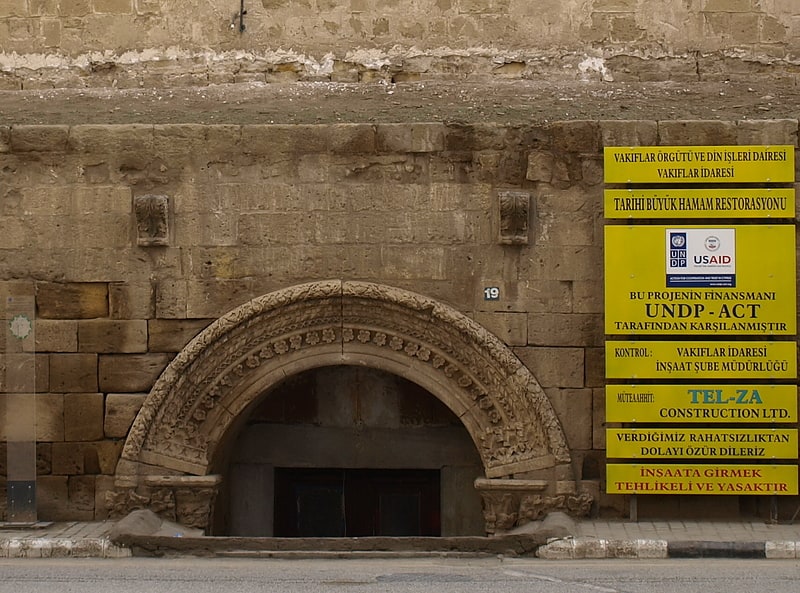
Also known as: Μπουγιούκ Χαμάμ
Public bath in Nicosia. Büyük Hamam is a Turkish bath in the Iplik Bazar–Korkut Effendi quarter of North Nicosia. It stands close to the İplik Pazarı Mosque. As a result of the rise of the ground of the surrounding areas over time, its door is now located around 2 meters below the ground level, and the bath rooms are 3 meters below.[17]
Dervish Pasha Mansion
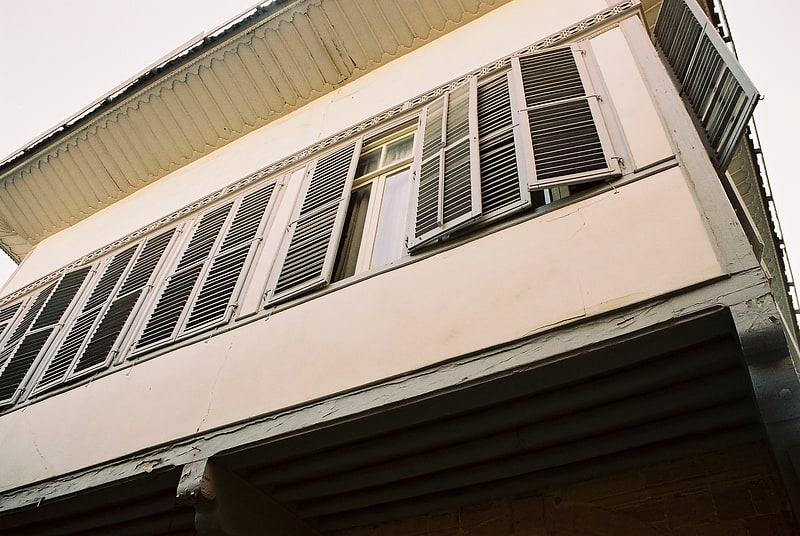
Mansion. Dervish Pasha Mansion is a historical mansion and ethnographic museum in the Arab Ahmet quarter of Nicosia, currently located in North Nicosia. It lies on the Beliğ Paşa Street and has two floors. It is considered to be one of the finest examples of Ottoman architecture in Cyprus.
The current mansion was built on an earlier Gothic building on the same site. Its front door bears the date of 1801 inscribed on it, implying that this was the date of construction of the building. It was repaired in 1869, with the ornate wood carvings on the ceiling being dated to this year. It belonged at the end of the 19th century to Hacı Ahmet Derviş Efendi, a wealthy Turkish Cypriot who owned large swathes of land outside the walled city of Nicosia.
The lower floor is made of stone and the upper floor is made of adobe. Its architecture carries a heavy Ottoman character and reflects the Ottoman lifestyle of the time. It has two entrance doors, historically, one was for men (selamlik) and one was for women (harem). It has a large inner courtyard, which was used by the household members for relaxation without exposure to the outside. A bay window at the upper floor was built in the Baghdadi style.
In 1979, the mansion was in the danger of collapse. It was purchased by the Turkish Cypriot state in 1981 and following a renovation, opened to visitors as an ethnographic museum on 21 March 1988. It is notable as the first significant renovation project in Northern Cyprus. In the mansion, assets of traditional Cypriot lifestyle, such as kitchen utensils, instruments for needlework, as well as old swords and historical clothes are on display.[18]
Address: Beliğ Paşa Sk, Nicosia
Leventis Gallery
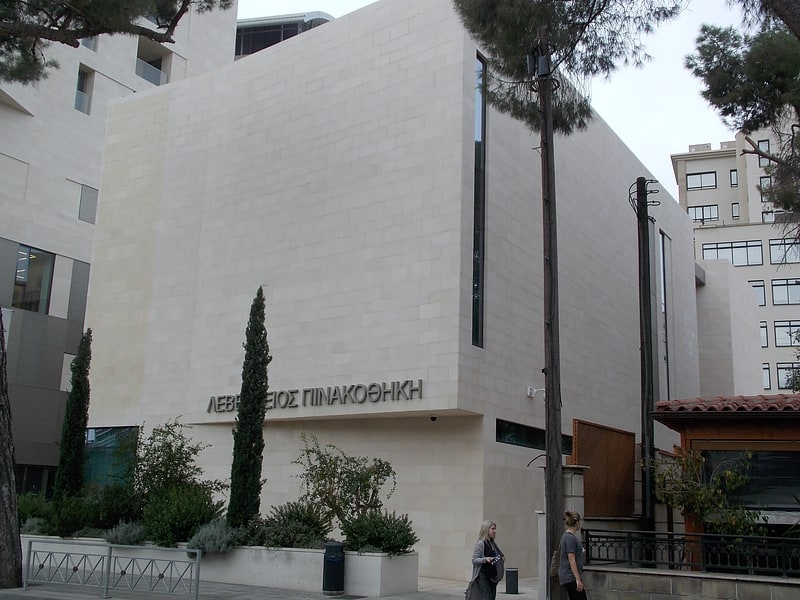
Art gallery in Nicosia, Cyprus. The Leventis Gallery is an art gallery in Nicosia, Cyprus. Opened in 2014, it houses a collection of over 800 paintings from Cypriot, Greek and European artists. An International architectural design competition was launched by RIBA Competitions to design the art gallery with restaurant and housing for the A G Leventis Foundation, a private foundation supporting educational, cultural and philanthropic causes mainly in Cyprus and Greece and promoting Hellenic culture. Following this competition Feilden Clegg Bradley Studios were selected and the project was completed in Jan. 2013.[19]
Address: A. G. Leventis 5, 1097 Nicosia
Gönyeli

Town in Cyprus. Gönyeli is a town in Cyprus, near the capital city Nicosia. It is de facto under the control of Northern Cyprus. Over the years the town has merged with North Nicosia, making it connurbated with the city. Its population as of 2011 is 11,671.[20]